Sikh Turban History & Facts

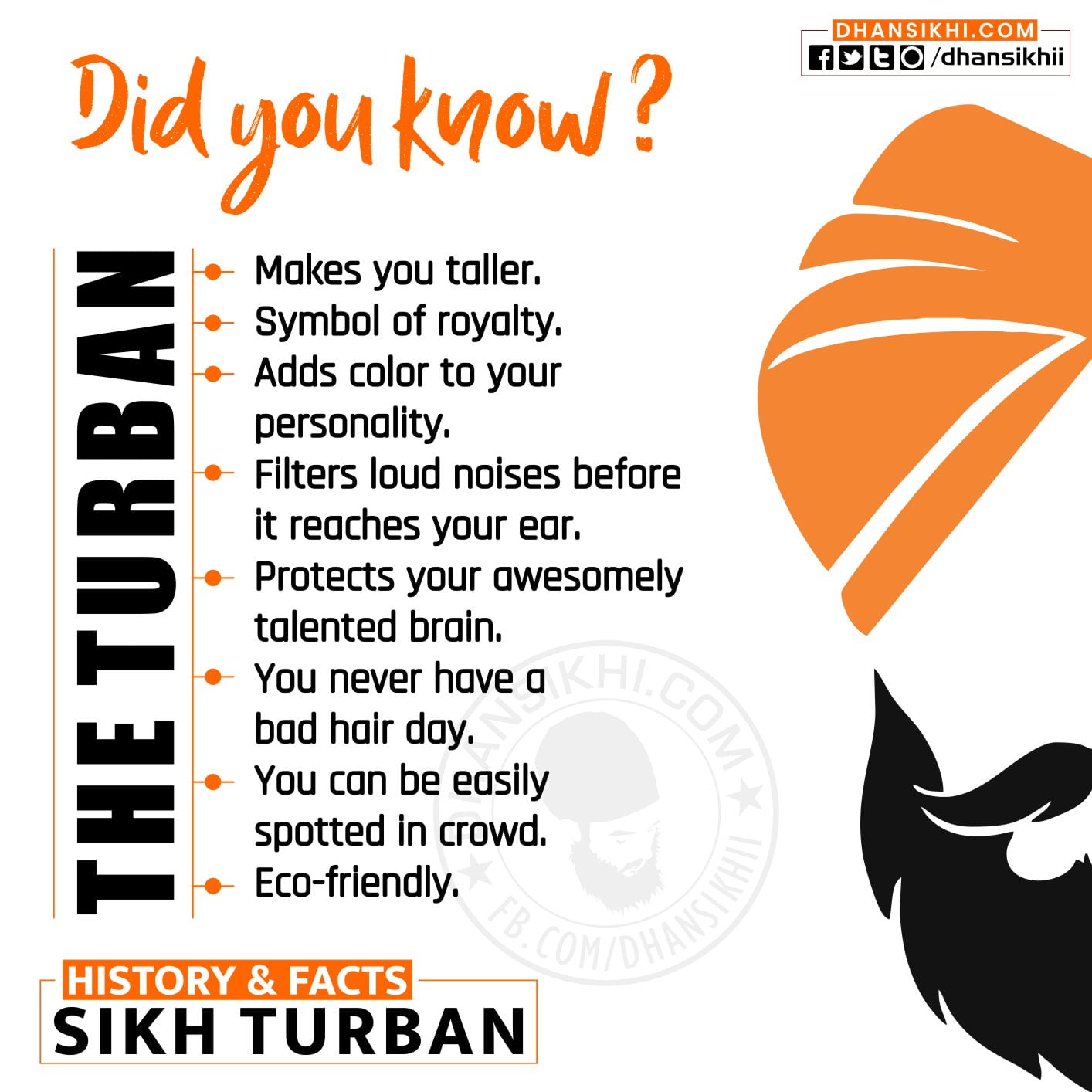
The Turban – Makes you taller. Symbol of royalty. Adds color to your personality. Filters loud noises before it reaches your ear. Protects your awesomely talented brain. You never have a bad hair day. You can be easily spotted in-crowd. Eco-friendly.

In South Asian culture, wearing a turban typically indicated one’s social status – kings and rulers once wore turbans. The Sikh gurus adopted the turban, in part, to remind Sikhs that all humans are sovereign, royal, and ultimately equal.
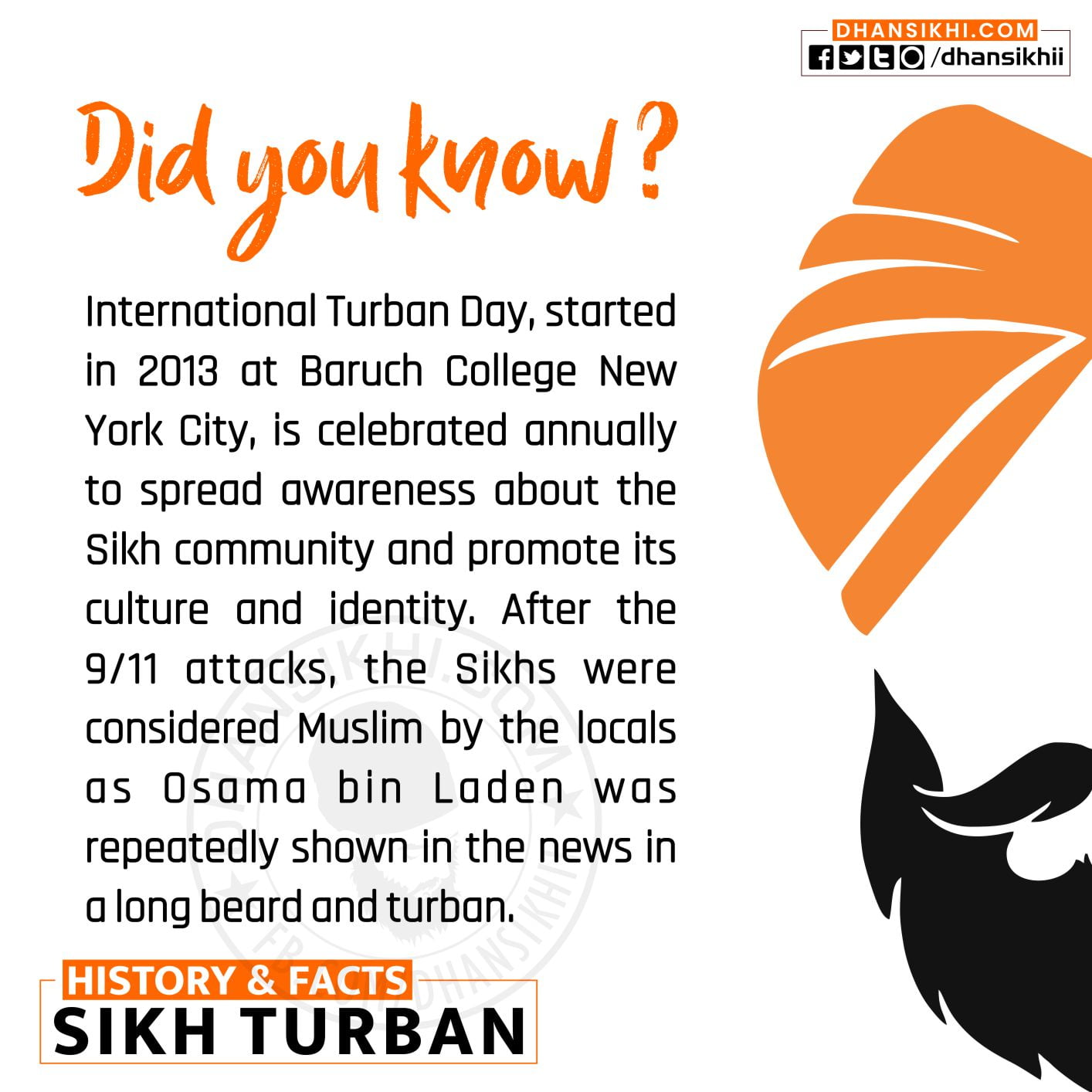
International Turban Day, started in 2013 at Baruch College New York City, is celebrated annually to spread awareness about the Sikh community and promote its culture and identity. After the 9/11 attacks, the Sikhs were considered Muslim by the locals as Osama bin Laden was repeatedly shown in the news in a long beard and turban.

Sikh faith forbids them from cutting their hair, as their hair is considered sacred. Sikh men wear turbans to protect their hair; the turbans also carry a symbolic value of their own. Sikhs believe that keeping their hair long allows them to take their minds off of their appearance and be more focused on God.

Sikhs are not Muslim. But along with Muslims, Arabs, and South Asians since the Sept. 11, 2001, terrorist attacks, Sikhs have been the target of hate crimes in the US, sometimes from those seeking to attack Muslims. They mistake Sikh turbans and beards for those of men in some Arab cultures.

Sikhs believe that all humans are equal, regardless of gender, religion, race, or ethnicity. One way that Sikhs express this belief is by offering free communal meals to anyone who visits Sikh places of worship known as gurudwaras. Men and women worship together but often don’t sit intermixed in the gurudwara.

Aurangzeb attempted to prevent non-Muslims from wearing turbans, decreeing that only the Islamic ruling class had the authority to wear them. When Guru Tegh Bahadur was executed by Aurangzeb in Delhi, his son Gobind founded a warrior group known as the Khalsa. Then the turban had become an act of defiance against the emperor. It was the Sikhs’ sign of freedom, a symbol of equality, and a way to end caste distinctions.

The arrival of the British in Punjab in 1845 triggered one of the most significant shifts in Sikh identity. British were impressed with Sikh’s military skills and began recruiting them to fight for the empire. British were aware that caste issues could affect the cohesiveness of the British Indian Army (which also included Hindu and Muslim soldiers). So the British made it mandatory for all soldiers to wear a turban for creating a sense of equality.
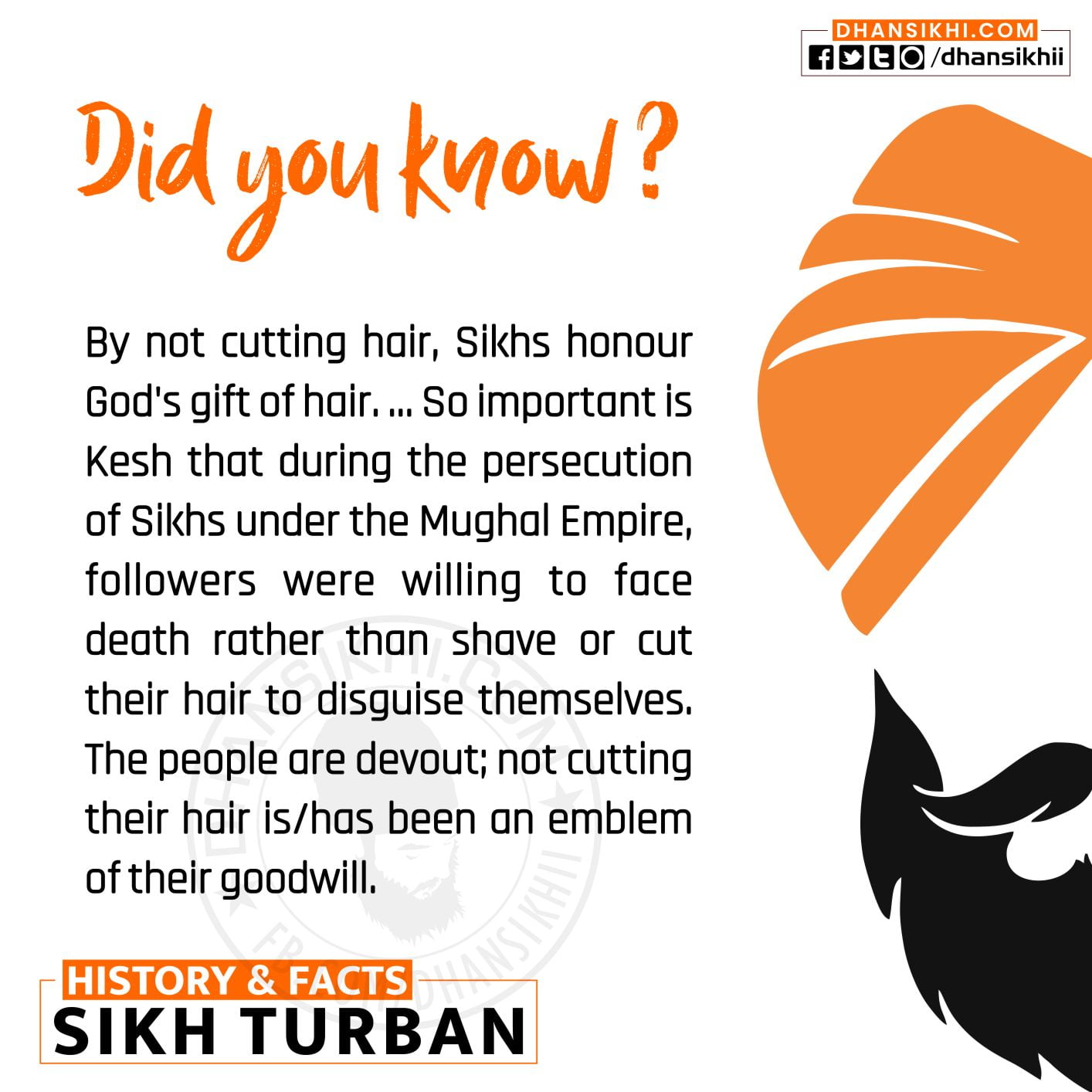
By not cutting hair, Sikhs honour God’s gift of hair. … So important is Kesh that during the persecution of Sikhs under the Mughal Empire, followers were willing to face death rather than shave or cut their hair to disguise themselves. The people are devout; not cutting their hair is/has been an emblem of their goodwill.

A dastār which derives from dast-e-yār or “The hand of God”, is an item of headwear associated with Sikhism, and is an important part of the Sikh culture. The word is loaned from Persian through Punjabi. In Persian, the word dastār can refer to any kind of turban and replaced the original word for turban (dolband), from which the English word is derived.
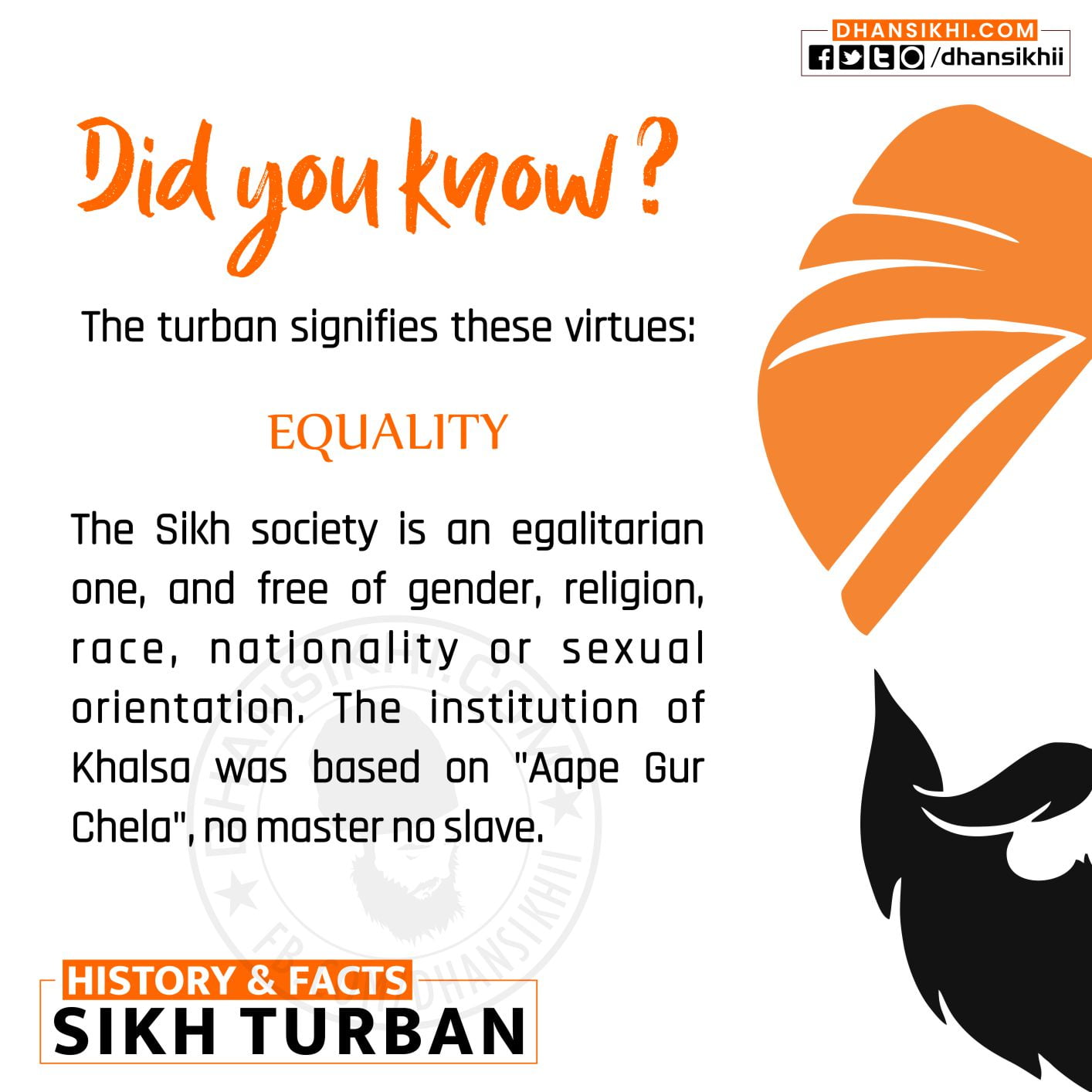
The turban signifies these virtues: EQUALITY – The Sikh society is an egalitarian one, and free of gender, religion, race, nationality, or sexual orientation. The institution of Khalsa was based on “Aape Gur Chela”, no master no slave.
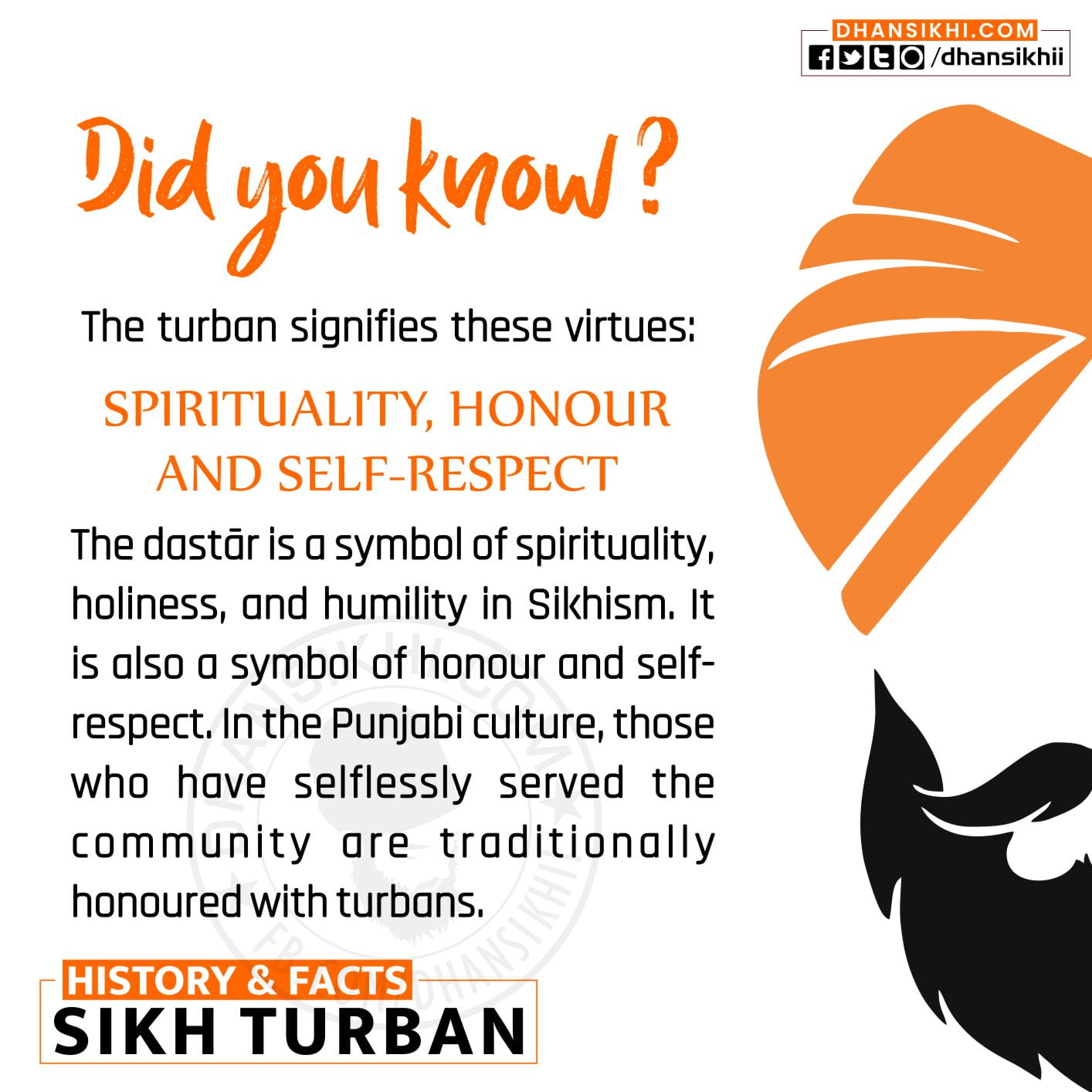
Sikh Turban History & Facts Insta Post Whatsapp Status
The turban signifies these virtues: SPIRITUALITY, HONOUR AND SELF-RESPECT – The dastār is a symbol of spirituality, holiness, and humility in Sikhism. It is also a symbol of honour and self-respect. In the Punjabi culture, those who have selflessly served the community are traditionally honoured with turbans.

The turban signifies these virtues: PIETY AND MORAL VALUES – The dastār also signifies piety and purity of mind. In Punjabi society, the Khalsa Sikhs are considered as protectors of the weak, even among the non-Sikhs. In the older times, the Khalsa warriors moved from village to village at night, during the battles. When they needed a place to hide from the enemy, the womenfolk, who had a very high degree of trust in them used to let them inside their houses. It was a common saying in Punjab: Aye nihang, booha khol de nishang (“The nihangs are at the door. Dear woman! go ahead open the door without any fear whatsoever.”)
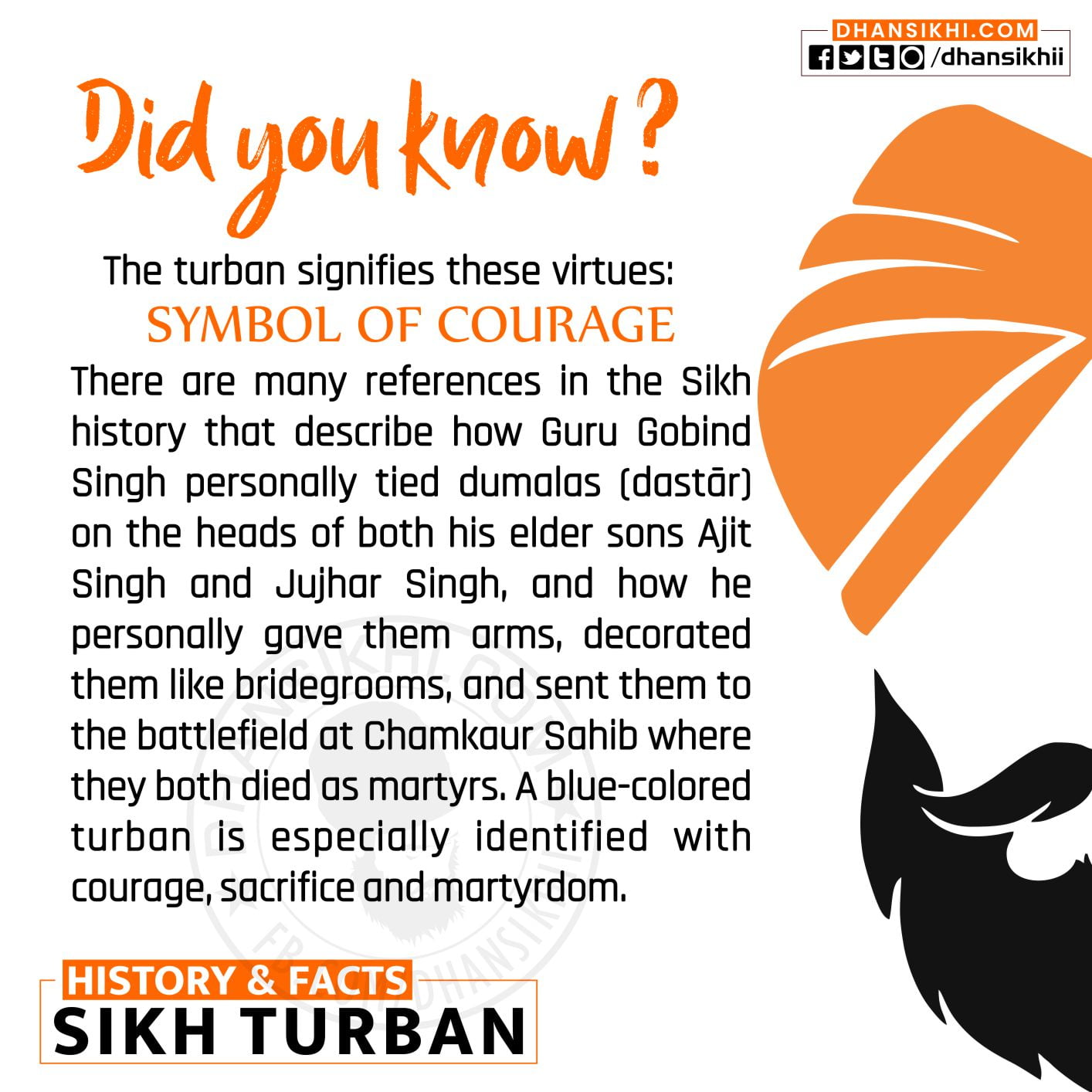
The turban signifies these virtues: SYMBOL OF COURAGE – There are many references in the Sikh history that describe how Guru Gobind Singh personally tied dumalas (dastār) on the heads of both his elder sons Ajit Singh and Jujhar Singh, and how he personally gave them arms, decorated them like bridegrooms, and sent them to the battlefield at Chamkaur Sahib where they both died as martyrs. A blue-colored turban is especially identified with courage, sacrifice and martyrdom.
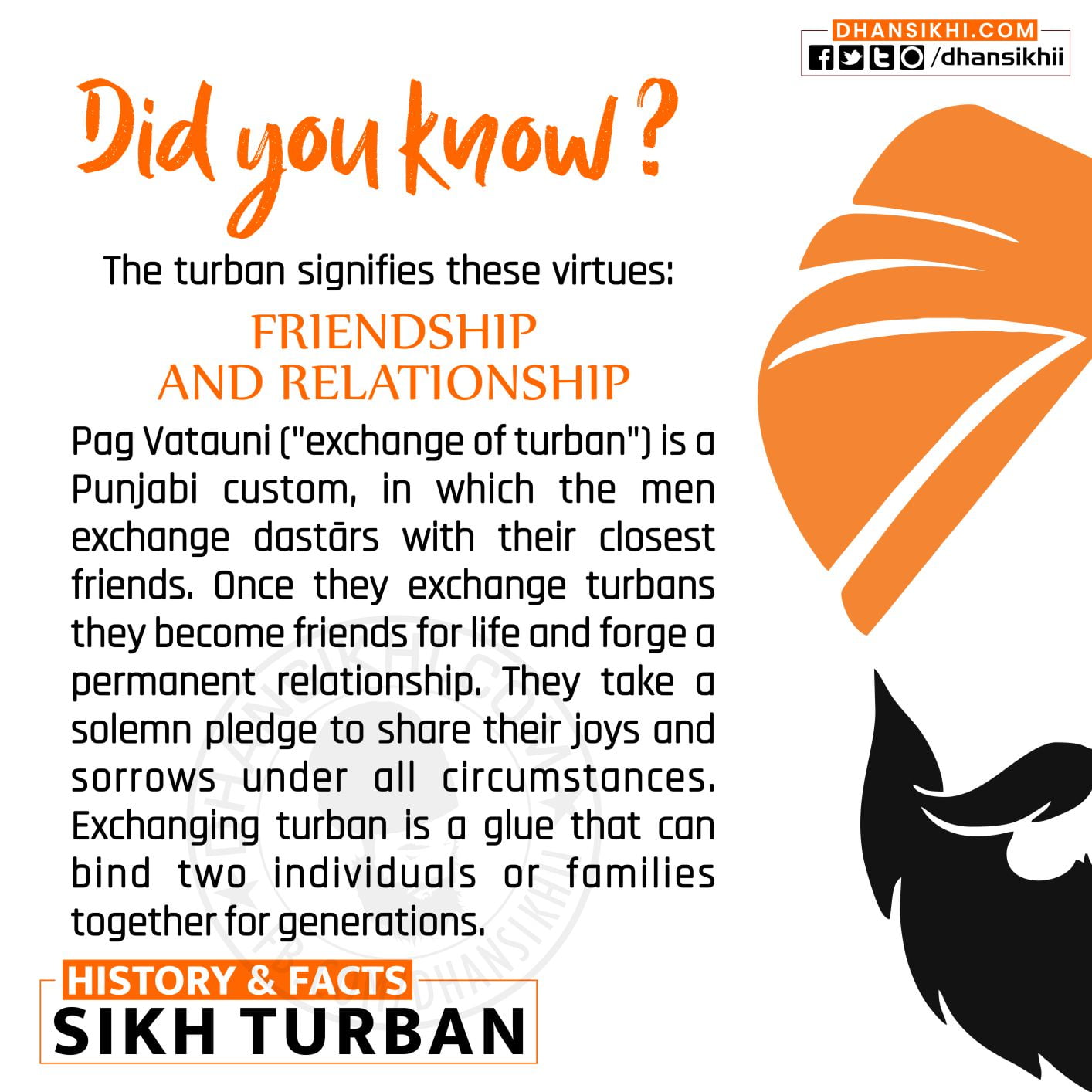
The turban signifies these virtues: FRIENDSHIP AND RELATIONSHIP – Pag Vatauni (“exchange of turban”) is a Punjabi custom, in which the men exchange dastārs with their closest friends. Once they exchange turbans they become friends for life and forge a permanent relationship. They take a solemn pledge to share their joys and sorrows under all circumstances. Exchanging turban is a glue that can bind two individuals or families together for generations.

In 2012 British media reported that a Guardsman of the Scots Guards Jatinderpal Singh Bhullar became the first Sikh to guard Buckingham Palace wearing a dastār instead of the traditional bearskin.
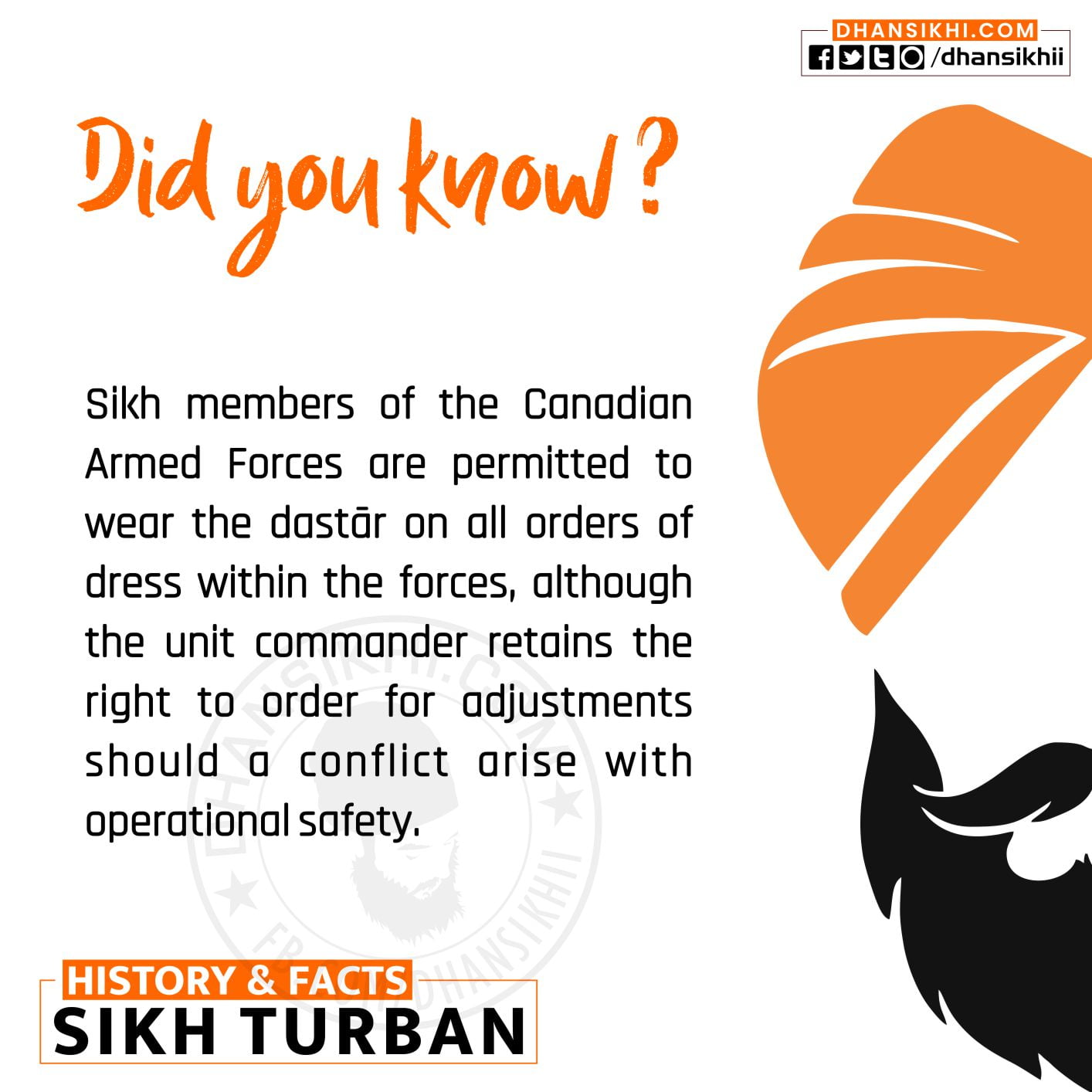
Sikh members of the Canadian Armed Forces are permitted to wear the dastār on all orders of dress within the forces, although the unit commander retains the right to order for adjustments should a conflict arise with operational safety.
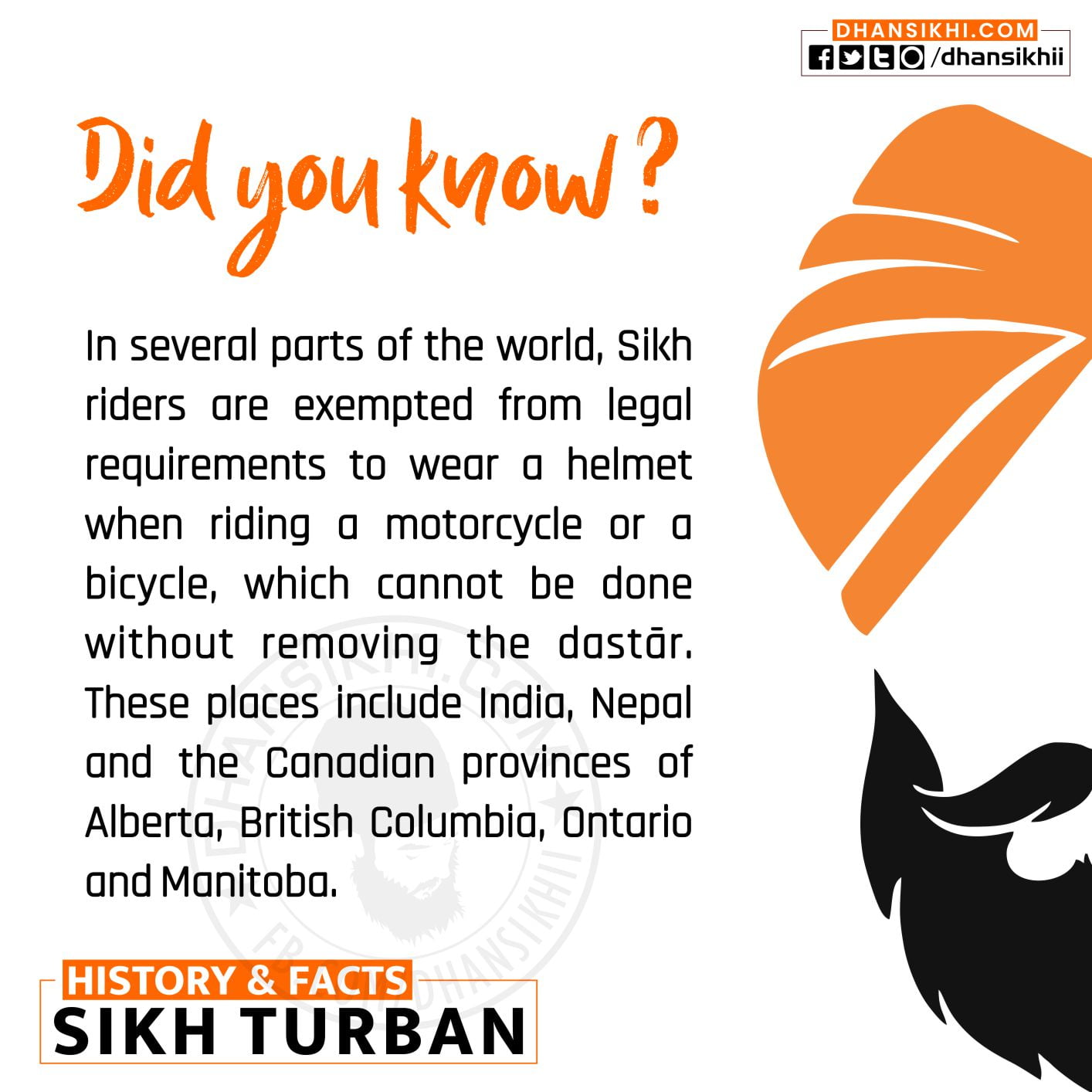
In several parts of the world, Sikh riders are exempted from legal requirements to wear a helmet when riding a motorcycle or a bicycle, which cannot be done without removing the dastār. These places include India, Nepal and the Canadian provinces of Alberta, British Columbia, Ontario and Manitoba.

Towards the end of 2016, the NYPD finally allowed officers to wear turbans and grow beards for religious reasons. Earlier this year, Gursoch Kaur, a 20-year-old Indian-American woman from Queens, New York, became the first turbaned Sikh woman to join the New York Police Department.
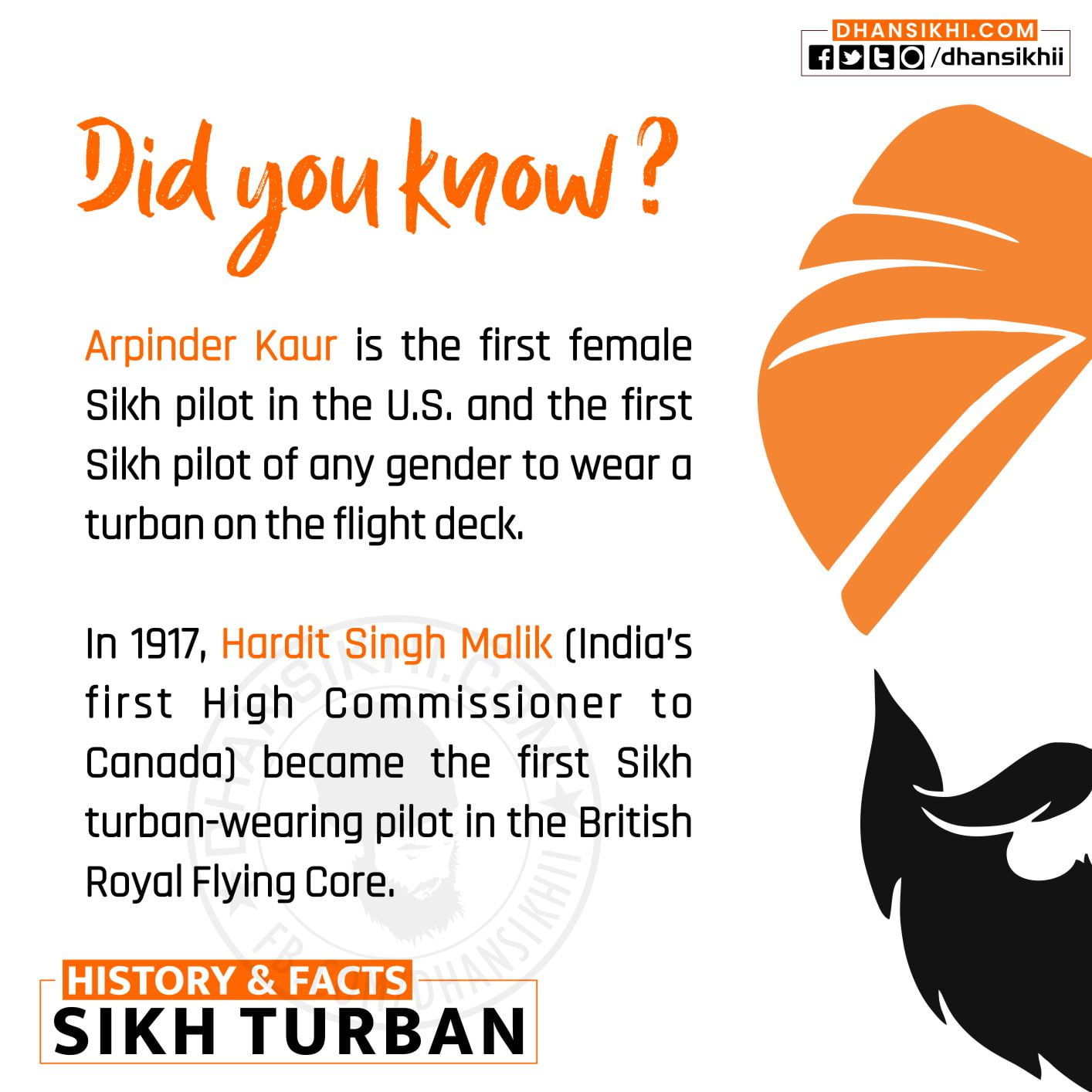
Arpinder Kaur is the first female Sikh pilot in the U.S. and the first Sikh pilot of any gender to wear a turban on the flight deck. In 1917, Hardit Singh Malik (India’s first High Commissioner to Canada) became the first Sikh turban-wearing pilot in the British Royal Flying Core.
PLEASE VISIT OUR YOUTUBE CHANNEL FOR VIDEO SAAKHIS, GREETINGS, WHATSAPP STATUS, INSTA POST ETC.
Gurpurab Dates 2024 | Sangrand Dates 2024 | Puranmashi Dates 2024
Masya Dates 2024 | Panchami Dates 2024 | Dasmi Dates 2024










